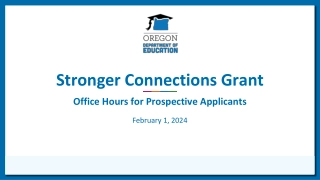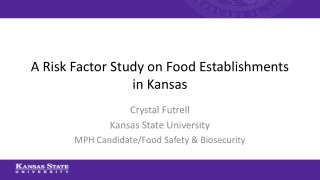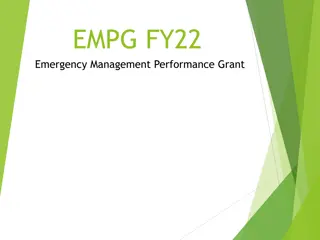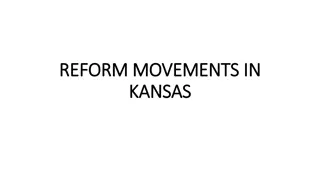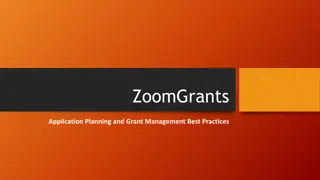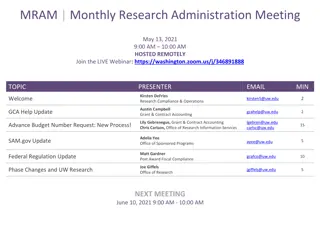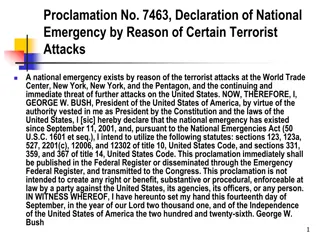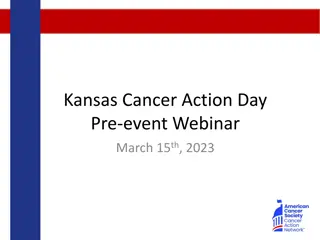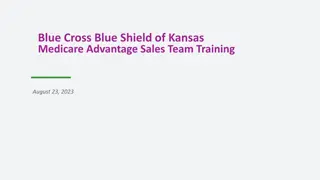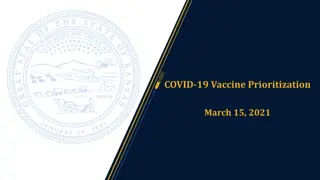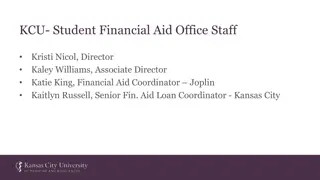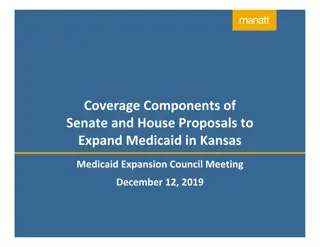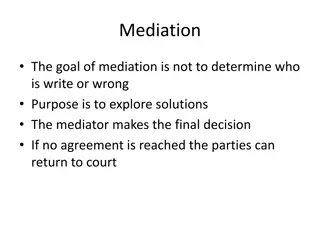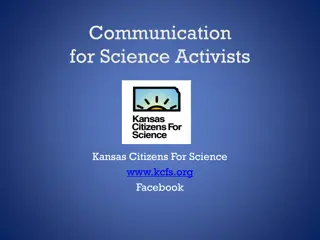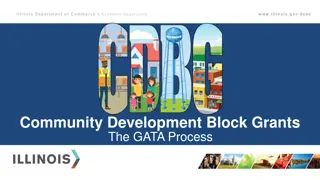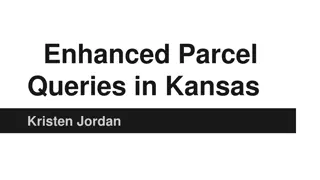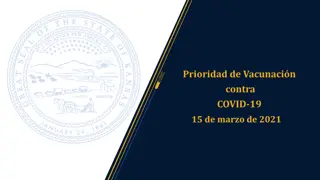Enhancing Emergency Management Capabilities in Kansas: Administration of HMEP Grant
Kansas Division of Emergency Management (KDEM) oversees the administration of various grant programs aimed at building sustainable emergency management capabilities across all phases. Challenges and solutions in grant management, fund allocation priorities, subgrant application components, and program streamlining are addressed to ensure effective utilization of resources in enhancing emergency preparedness in Kansas.
Download Presentation

Please find below an Image/Link to download the presentation.
The content on the website is provided AS IS for your information and personal use only. It may not be sold, licensed, or shared on other websites without obtaining consent from the author.If you encounter any issues during the download, it is possible that the publisher has removed the file from their server.
You are allowed to download the files provided on this website for personal or commercial use, subject to the condition that they are used lawfully. All files are the property of their respective owners.
The content on the website is provided AS IS for your information and personal use only. It may not be sold, licensed, or shared on other websites without obtaining consent from the author.
E N D
Presentation Transcript
Administration of HMEP Grant at the State Level Outreach, Collaboration and Challenges Swapan K Saha Kansas Division of Emergency Management Building sustainable capabilities across all phases of Emergency Management in Kansas through selfless service
Grant Programs Administered by the Kansas Division of Emergency Management (KDEM) Emergency Management Performance Grant Hazardous Materials Emergency Preparedness Grant Hazard Mitigation Grant Flood Mitigation Assistance Grant Hazard Mitigation Assistance Grant Individual Assistance Grant Building sustainable capabilities across all phases of Emergency Management in Kansas through selfless service
Background KS HMEP grant program - since the inception of the grant program at the federal level. Issues identified in 2008: State drew down funds early in the grant period. Advances were authorized. Open subgrants from previous years, unspent funds. Unspent funds were returned to PHMSA in 2009. Federal audit in 2010. Building sustainable capabilities across all phases of Emergency Management in Kansas through selfless service
Streamline HMEP Program Fixed subgrant application period. Identify funding priority areas. Develop subgrant application scoring criteria. Subgrant review process- HMEP Grant Review Committee (involves experts from different KDEM bureaus). Preapproval of training projects. Review committee recommends applications for approval by CEPR (SERC for Kansas). Approved HMEP applications are submitted to PHMSA (contractual projects). Building sustainable capabilities across all phases of Emergency Management in Kansas through selfless service
Subgrant Application Components Subgrant Application Components oNeeds Assessment. oGoals & Objectives. oProject Description. oProject Timeline. oDetailed Budget. oCertification by authorities Kansas HMEP Grant Guidance & Scope Of Work (SOW) oCommodity Flow Study SOW. oHazards Analysis SOW. oHazmat exercise SOW. Building sustainable capabilities across all phases of Emergency Management in Kansas through selfless service
HMEP Fund Allocation Priority order: o Counties/LEPCs. o Office of State Fire Marshal. o Kansas University Fire and Rescue Training Institute. o Other public entities. o KDEM projects. Travel and admin cost less than 15% Building sustainable capabilities across all phases of Emergency Management in Kansas through selfless service
HMEP Subgrant Award/Execution Notification to subgrantees. Subgrant contract - Reviewed and approved by legal. Contract signed between subrecipients and KDEM KDEM monitors subgrantee performance provides feedback. Reimbursement requests from subgrantees are reviewed and processed. Subrecipients submit mid-year and annual reports. KDEM submits FFR and Annual Reports to PHMSA. Reallocation of unspent funds supplemental subgrant applications. Building sustainable capabilities across all phases of Emergency Management in Kansas through selfless service
Outreach Activities Presentations at: KEMA and HLS Regional Meetings. Presentation at KEMA/LEPC Conference. Regional workshops Webinar Live Webinar. Online Video Presentation (https://youtu.be/QrtwXjLq-es). Emphasis on regional projects. Building sustainable capabilities across all phases of Emergency Management in Kansas through selfless service
Collaboration Effective utilization of funds o Ops level training through KU Fire and Training Institute. o Tech Level training through Office of State Fire Marshal. Alternate training efforts: o Kansas Hazmat Symposium. o LEPC Conference. o Interstate projects. o Training through other not-for profit organization. Training/exercise activities through KDEM Training and Exercise Division. Building sustainable capabilities across all phases of Emergency Management in Kansas through selfless service
Challenges Average 8-10 LEPCs apply for HMEP funds/year. Very few applications from rural jurisdictions o Misunderstanding of the purpose of the grant program. o Grant process involves too much paperwork. o Lack of experience in grant writing. o Part time emergency manager. Turnover at the local level. Disagreements at the local level. Subgrant certification process. Building sustainable capabilities across all phases of Emergency Management in Kansas through selfless service
Challengescontinued Lack of buy in for LEPCs unfunded mandate. Essentially, same applicants apply for HMEP funds. Rural LEPCs lack resources o Part time EM. o Lack of Equipment/Training supplies for drills and exercises. o Volunteer fire departments. Federal Limitations/Restrictions (equipment, supplies, WMD/CBRNE vs. HazMat, etc.). Cancelled projects- unspent funds. No bids/quotes/RFPs until subgrants are awarded delays timely execution of the grants. Building sustainable capabilities across all phases of Emergency Management in Kansas through selfless service
Challengescontinued Congress is concerned about the effectiveness of the HMEP Grants Program. Some industry groups had been critical of the program in terms of its effectiveness, and some even suggested abolishing the program. PHMSA needs to prove to congress the purpose and effectiveness - reauthorization of the grant program. Audit findings pushes for stricter enforcements. Considerable improvement in recent years but more can be done. Building sustainable capabilities across all phases of Emergency Management in Kansas through selfless service
Thoughts? LEPC training initiatives from PHMSA or EPA. Funds for LEPC activities. Additional outreach efforts from PHMSA and NASTTPO. Improved interaction among states grantees. Centralized resources for States/LEPCs o HMEP Expenditure Guide/Best Practices Guide. o Data on EHS transported through highways and rail. o Tier 2, RMP, CFATS, etc. o Database of training across the country. o Curriculum for training. o Integration of information across federal agencies. Building sustainable capabilities across all phases of Emergency Management in Kansas through selfless service
Questions Building sustainable capabilities across all phases of Emergency Management in Kansas through selfless service
Contact Information Swapan K Saha, PhD Environmental Program Administrator Kansas Division of Emergency Management 2800 SW Topeka Blvd., Topeka KS 66611 Phone: (785) 207-1579 Email: swapan.saha@ks.gov Building sustainable capabilities across all phases of Emergency Management in Kansas through selfless service


